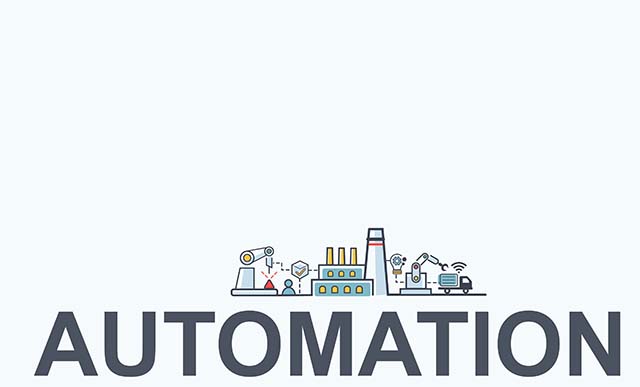By Deepa Salem, Vice President and Research Director, SAPInsider
Testing functions face significant pressures due to SAP’s accelerated pace of product rollout and the increasingly integrated nature of SAP’s applications. SAP customers embarking on digital transformation aim to move from the traditional waterfall application development approach to more of an agile and continuous integration/continuous delivery (CI/CD) approach.
SAPInsider’s research on
Modernization of Software Testing – Trends from SAPInsider Survey revealed that rapid testing to meet critical business needs (69%) is the primary goal of testing today, followed by reducing IT costs with reusable, scalable testing artifacts and processes (49%). The survey also revealed that many are modernizing their testing functions, ranging from testing automation to adopting DevOps frameworks.
Though business demands rapid application rollout, with SAP landscapes, the testing process is often not geared to speed. Test data is one of the hurdles preventing this speed of execution.
Drivers for Modernizing Test Data Creation
Mick Shieh, Global Business Development Leader at Delphix, a DevOps and test data management vendor, explains, “Data becomes a heavyweight on the application roadmap. Deploying applications can be nimble but setting up data is a very manual process.”
What is needed for rapid, high-quality testing is test data creation that meets the following goals:
- Production quality data to ensure accurate testing and high-quality applications.
- Test data that meet compliance requirements such as General Data Protection Regulation (GDPR), Health Insurance Portability and Accountability Act (HIPAA), Payment Card Industry Data Security Standard (PCI-DSS), etc.
- Holistic data with referential integrity to test across SAP and non-SAP systems since a hybrid SAP landscape has become the norm.
- Ability to reuse test data across changes, is increasingly critical as the pace of upgrades and updates accelerates.
- Regression testing to ensure nothing breaks due to any change.
More SAP customers moving to SAP S/4HANA realize that the value of the cloud can be fully realized when the full stack, including data, is moved to the cloud. Shieh emphasizes, “As more and more SAP clients embark on SAP projects on the cloud, they use system integrators who also use offshore resources. The need for data compliance becomes critical, and sensitive data must be protected in the lower environments they use.”
Challenges in the Manual Test Data Model
Yet, generating test data is increasingly challenging due to the increased compliance requirements and the increasing integration of SAP with non-SAP software on a hybrid infrastructure. Shieh clarifies, “The best way to create test data is to scramble data consistently with referential integrity across applications to reduce data creation efforts and improve testing efficiency.”
This is a complex process for many reasons.
First, to create test data, coordination happens manually among organizational silos using script-based processes and legacy tools like test data management servers (TDMS). This does not enable the agility that is required for testing.
Second, companies want production-quality data, which is challenging without sacrificing privacy and compliance. Shieh relates Delphix’s experience: “Companies have workarounds to create synthetic data using very manual scripts. So, testing cycles become very long, and the iterations become painful.”
Further, synthetic data has limitations. Matthew Yeh, Vice President of Product Marketing of Delphix, also highlights the challenge of reusing test data without compromising compliance. “Companies scramble data for compliance purposes, but that data is difficult to load into test environments.”
Benefits of Automating Test Data
Automating the creation and management of test data can move the needle on rapid and high-quality testing.
Test data automation solutions, such as those from Delphix, sync with SAP and other databases and create virtual copies of the data. Their application programming interface (API) controls automated data operations such as data refresh, cleanup, versioning, and masking. Delphix also runs as both cloud and on-premise solutions to support various requirements. Further, it can plug into multiple testing and testing automation tools.
The benefits of such test data automation solutions can range from cutting time and costs to improving confidence in quality, such as below:
- Simplified, repeatable testing model that works even when on cloud or outsourcing testing
- Acceleration in testing since the time to get quality test data from production goes down from weeks to minutes
- Ability to execute multiple, concurrent projects with virtual data copies
- Capability to identify and mask sensitive SAP data for compliance
- Ability to synchronize data across SAP and non-SAP systems
In addition, these innovative solutions also allow for resetting, rewinding, and branching of data to save time in testing multiple scenarios. As Shieh says, “If testing teams have the ability to rewind a workflow, it can be a huge gamechanger.”
Further, with the technology to scramble and mask production data, the test data volume is now in gigabytes rather than terabytes.
There is also a tremendous mindset shift in application roadmaps. Companies that were constrained to deliver more applications due to testing cycles can now free themselves to be nimble. Hence, the impact of test data automation can be long-term and strategic.
What Does This Mean for SAPinsiders?
For SAPinsiders moving to SAP S/4HANA or moving on their application roadmap, removing the constraints and hurdles on test data can accelerate testing and ensure higher quality results.
- Evaluate and understand the test data sources and compliance requirements. A migration to SAP S/4HANA, for example, can have widespread ramifications on test data. Integration will further complicate the test data needed.
- Explore test data automation solutions to ensure production-quality test data that also meets compliance requirements. Ensure business requirements are adequately captured to enable quality data.
- Upskill teams to execute strategies for reusing, resetting, rewinding, and branching testing cycles using test data automation solutions to reduce testing times and improve quality.









